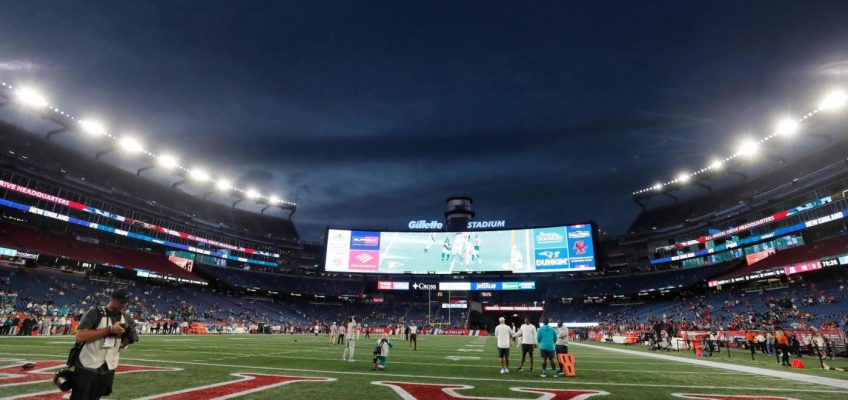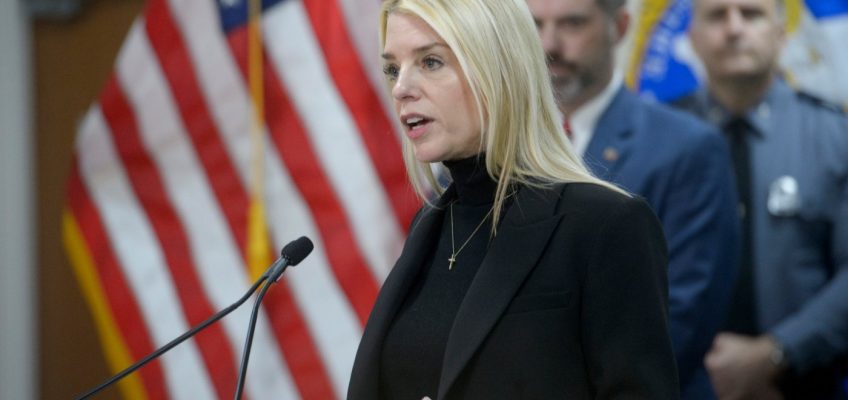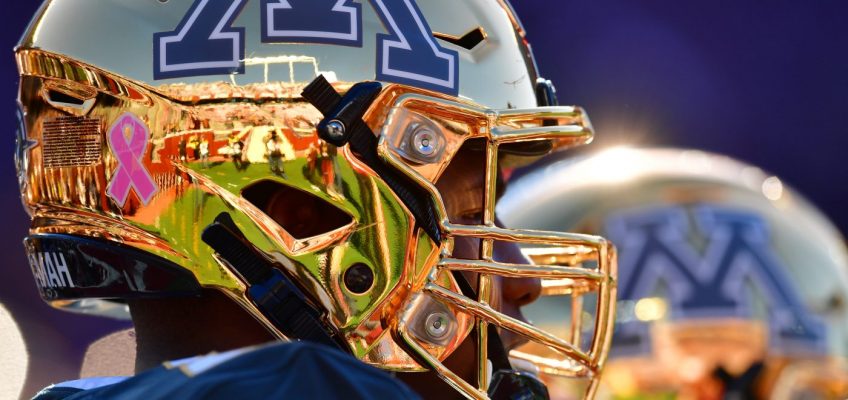Editor’s Note: The Observer published this feature in its March 27, 1998, edition. The prior year’s private school voucher proposal narrowly died at the Lege.
Bullock wouldn’t discuss his recent resignation from the voucher PAC Putting Children First. But his aide, Tony Proffitt—who has worked for Bullock since long before he moved from the comptroller’s to the lieutenant governor’s office—said the Lieutenant Governor still supports a “very limited voucher program,” and that he left Putting Children First because, as was first reported by the Dallas Morning News, “it was engaging in partisan activity.” The specific partisan activity was a January 19 letter from Putting Children First Chairman Jimmy Mansour to Betsy DeVoss, the founder of the Amway company [2025 Editor’s Note: Betsy DeVos married the son of the founder of Amway]. The letter refers to last session’s “tremendous momentum for our forces, as evidenced by Lt. Governor Bob Bullock joining our effort.” And it mentions plans “to gain two additional seats in the senate, where we currently hold a slim majority.” (Mansour’s “we” is, bluntly, the Republican Party, which now holds a 17-14 advantage in the Senate.) The letter focuses, however, on the House: “There are eight crucial seats which we need to win in the Texas house, to obtain a Republican majority. By winning these seats we will ensure a new speaker of the house who will not attempt to block our legislation.”
“They assured him it wouldn’t be partisan,” Proffitt said. “Bullock still believes that a child who has been refused admission to another public school, after leaving a low-performing public school, should be allowed to attend a private school—as long as it doesn’t have a religious program.”
Bullock spent only a few months as honorary chair of Putting Children First, and has since declined to discuss his resignation. In his six-sentence letter to Mansour, Bullock wrote, “since partisanship has been introduced into this effort I feel I can no longer serve as the group’s honorary chairman,” but he reaffirmed his support of “the concept of a limited, test program for school vouchers in Texas.”
Support for a limited voucher program is one thing; membership in Putting Children First is another.
To take Bullock’s metaphor a little farther from the Gulf, the Lieutenant Governor’s association with the voucher lobby is not so much about what you eat as who you eat with. Bullock’s political office (which, until last year when he announced that he will not run again, was a full-time, year-round political campaign) is as efficient and well-funded an operation as Texas has ever known. Because of that office and that operation, Bullock has often seemed omniscient; there is little that goes on in the capital that he does not know about.
And in all likelihood, he has known and knows about Putting Children First, which until last year operated as a thoroughly partisan political action committee called “The A+ PAC for Parental School Choice.” A+ was directed and funded by the same Jimmy Mansour to whom Bullock submitted his March 5 resignation from Putting Children First. And A+, controlled by Mansour and San Antonio physician and medical supply company owner James Leininger, spent a huge amount of money on legislative and State Board of Education races, with almost all of that money going to conservative Republican candidates. Although A+ focused on the House and Board of Education, it also worked to ensure that the Senate over which Bullock presided would have a Republican majority, giving at least $20,000 to the unsuccessful candidacy of Bob Reese and at least $5,000 to Senator Steve Ogden, who trounced a woefully underfunded Democratic opponent.
The total amount A+ contributed to Senate campaigns can’t be precisely determined from Ethics Commission filings, because Mansour and Leininger played a PAC shell game that makes it impossible to follow their money. For example, they funneled $100,700 through Leadership Texas ’96, a Republican Party funding mechanism that no longer exists and which never filed any disclosures with the Ethics Commission. They gave at least $73,000 to the Republican Party of Texas, and contributed $25,000 to 76 in 96. Seventy-six is the number required to hold a majority in the 150-member House; and 76 in 96—directed by Milton Reisner, aide to Midland Representative Tom Craddick, who chairs the House Republican Caucus—was one of the “big three” Republican Party PACs that spent several million dollars on elections. (Besides directly electing Republican candidates in the past two sessions, the PACs’ targeting of vulnerable incumbent Democrats has driven the cost of campaigns so high that the limited funding resources of Texas Democrats are constantly exhausted.)
Not only did A+ contribute $25,000 to 76 in 96, it provided $10,000 to the campaign of Representative Carl Isset, a freshman Christian Coalition candidate who remained just outside the right margin of House politics during the last session. A+ and Leininger himself gave at least $18,784 to Hollis Cain, who spent $70,000 in a futile attempt to defeat House Speaker Pete Laney in 1996, and who is Laney’s Republican opponent in 1998. (The exact totals are uncertain, because once A+ money was commingled with moneys of Leadership Texas ’96, 76 in 96, and the Republican Party of Texas, it couldn’t be separately followed. And far more money was spent on Cain’s race by various interest groups working to defeat the Speaker.)
So it should not have been surprising to Lieutenant Governor Bullock that Mansour would write to Betsy DeVoss, sitting atop Amway’s corporate pyramid [2025 Editor’s Note: See above], to ask for $125,000, to help “ensure a new speaker of the house who will not attempt to block our legislation.” (In the aftermath of Bullock’s resignation, Mansour now denies that he wrote the letter, and his various public relations subcontractors, which include Temerlin McClain Public Relations and McDonald and Associates, spent the week following the resignation working on a credible account of who did. Readers might ask themselves one question: How likely is it that an employee of a political action committee would send out a letter to a major corporate funder, over the signature of the PAC’s director—without informing the person whose signature would appear at the bottom of the letter?)
“I trust,” wrote Mansour—in an underlined postscript that also referred to an enclosed summary of races on the “targeting list”—”that you will keep the information in this letter totally confidential.” A similar letter went to Wal-Mart heir John Walton, who responded with a $100,000 check. As Putting Children First has raised only $100,190 thus far, Walton is its sole funder. Walton, who has supported voucher programs in other states, also owns interests in private schools. In 1996, Walton contributed $100,000 to the A+ PAC, which was largely funded by Mansour and Leininger.
“This is not about the A+ PAC and it’s not about any [funding] lineage,” said Chuck McDonald, in response to a question about the funders and policy agenda shared by A+ and Putting Children First. McDonald, who worked as spokesperson for Ann Richards when she was governor, now owns a public relations firm, also among those hired by Putting Children First. “They formed a group in January of ’97 to go out and do one thing and one thing only,” McDonald said. “The PAC had one purpose and still has one purpose. It exists to give equally to Democrats and Republicans” who support school voucher legislation. McDonald said the PAC gave to candidates of both parties in this year’s primaries, focusing on incumbents who had supported vouchers in the past and who had drawn primary opponents. “Ron Wilson [a Houston Democrat] had an opponent and he got funding. And Ken Grusendorf [an Arlington Republican] had an opponent and he got funding.”
“Our contributions were bipartisan,” McDonald insisted. Public disclosure forms filed with the Ethics Commission do indicate that Putting Children First gave $13,500 to thirteen Republican incumbents and $8,327 to seven Democratic incumbents. All the Democrats are either black or Hispanic, and represent inner-city urban districts (with the exception of the indicted and all-but-convicted Gilbert Serna [2025 Editor’s Note: He later pleaded guilty], who represents El Paso’s Lower Valley). McDonald also said there will always be some imbalance in contributions, “as more Republicans than Democrats support vouchers.”
At this point in the election cycle, Putting Children First’s current contributions are almost irrelevant. The PAC raised $100,190 and spent $20,313 on administrative costs and candidates in the Democratic and Republican primaries. It is in general elections that PACs make a big splash, and in the last election A+ PAC (Mansour, Leininger, Walton, and several big, out-of-state funders) made sure that conservative Republican candidates were awash in money. So Putting Children First has been bi-partisan thus far. But the last time these funders got together as the A+ PAC, the contributions were indeed “imbalanced.” The A+. PAC provided a total of $8,500 to Democratic House candidates. To Republicans, it contributed $587,445. As with the Putting Children First money, almost all the A+ Democratic money went to minority, inner-city Democrats, who now find themselves in the seemingly awkward position of accepting contributions from corporate and Christian right funders whose explicit and much-announced goals include making the Democrats a minority party, and reducing funding for public education. In this battle, “vouchers” are simply a means to an end—and that end is defined by Republican funders.
Dr. James Leininger, for example, got involved in political campaigns in 1990, when he decided to bankroll Republican candidates for the Supreme Court—at a time when its Democratic majority included Ted Robertson, Oscar Mauzy, and Bill Kilgarlin. Leininger hired Wal-Mart public relations director Fritz Steiger, formed Texans for Justice, and relentlessly went after Robertson for accepting $120,000 in campaign contributions from South Texas oilman Clinton Manges. But, according to R.G. Ratcliffe of the Houston Chronicle, 86 percent ($196,000) of the money spent by Texans for Justice was Leininger’s money, which ultimately resulted in one of the most anti-consumer, anti-plaintiff, pro-corporate high courts in the country. Leininger—first turned on to politics in 1987 by a CBS News 60 Minutes report on the Texas Supreme Court—has been investing in his own candidates ever since, spending last year $550,000—or as Ratcliffe observed, “about fifty percent more than the $365,775 spent by the wealthy political action committee of the Texas Medical Association.”
Leininger has also collaborated with Mansour, who made his fortune in telecommunications, to leverage Texas money by bringing in funders like Walton, of Bentonville, Arkansas; John Patrick Rooney of Indianapolis ($50,000); and Robert L. Cone of Elverson, Pennsylvania ($100,000). Leininger, and to a lesser extent, Mansour, provided all of the funding for A+, except what was received from the aforementioned out-of-state funders—and a single grassroots level contribution of $5,000 from Robert Schoolfield of Austin. I asked Glen Lewis, an African-American Democrat from Fort Worth, if he had any misgivings about such funding, considering that most of the $685,000 Leininger spent on lobbying and campaigns last session was used against Democrats and Democratic Party interests. “I didn’t go to them,” Lewis said, “they came to me because I was interested in the issue.” Lewis, one of three Democrats who remain on Putting Children First’s Legislative Advisory Council, said he favors vouchers because of the extremely poor performance of the inner city public schools that his constituents are forced into. (The other Democrats still with Putting Children First are Ron Wilson, of Houston, and Laredo Representative Henry Cuellar, who sent Mansour a letter complaining about the letter that provoked Bullock’s resignation.) I asked Lewis if he had any objection to accepting campaign contributions from a group whose huge investment in elections is moving the state’s political center farther and farther to the right. “Texas politics?” Lewis said. “How could it get any farther right than it already is?” (For the answer to that question, Representative Lewis will only have to watch the next two election cycles.)
Domingo Garcia, a Democratic representative from Dallas, was more reflective than Lewis. “One, I resigned [from Putting Children First’s Legislative Advisory Board]. And, two, I support public-to-public and not public-to-private vouchers,” Garcia said, adding that his affiliation with Putting Children First had nothing to do with partisan politics. He said he will take advantage of whatever resources are available to pass voucher legislation that will allow students to transfer from low-performing public schools to high-performing public schools. “I have a different agenda. The Republicans are in this for the privatization and the free market aspect. I want to improve the public schools,” Garcia said. “I support increasing teacher salaries and decreasing class size to eighteen.” But until schools, and in particular inner-city schools, are improved, Garcia said, he will work to pass a voucher bill that will require school districts with high academic performance to accept students from schools with low academic performance. A law that Cuellar got through the 1997 session allows students to transfer from low-to high-performing schools, but doesn’t require the high-performing schools to accept students. Garcia said he will carry a bill that will require schools to admit students whose home-district schools cannot meet their needs. And the state, he said, should cover the students’ transportation costs. “I have seven students in my district who want to transfer to suburban schools that refuse to admit them,” Garcia said. “They think if they accept these seven students, they’ll have a whole wave of transfers and their standards will fall.”
SIGN UP FOR TEXAS OBSERVER EMAILS
Get our latest in-depth reporting straight to your inbox.
Garcia’s pragmatic argument may seem to make principled liberal opposition to vouchers seem somewhat precious. But in historical perspective, the battle over school vouchers is not finally about vouchers at all; it’s about real racial integration in Texas (and U.S.) public schools. Garcia has asked House Speaker Pete Laney for a seat on the education committee, describes education as the biggest crisis we face, and said the dilemma he faces is that he cannot “write off a generation of children while we’re fighting to improve the horrible public schools they’re forced to attend.” So like other legislators who represent inner-city school districts, Garcia has decided to make a deal with the devil. But the devil on the other side of this particular deal happens to be unalterably opposed to funding for public education, and moreover, the devil has more money to spend on elections than Garcia or any other progressive funders could raise if they mortgaged everything they owned.
There is an enormous amount of cynicism attached to this sort of issue-related campaign giving. What looks like principle at a distance, is politics-as-usual at close range. Minority inner-city candidates have accepted $500 to $1,000 checks, but their entire intake was less than the $10,000 provided for right-wing Lubbock Democrat Carl Isset—who will vote against teacher raises, smaller classes, and improved curriculum as long as he is an elected legislator drawing breath. And he is just one of a pack of Christian right franchises elected by Mansour, Leininger, Walton, and a myriad of other Republican PAC funders.
If you want to understand what is driving the Texas legislative movement for school vouchers, don’t read Chuck McDonald’s lips, or Bob Bullock’s resignation letter. Read instead the canceled checks of James Leininger, and Jimmy Mansour, and John Walton—if you can find them, as the funders will now re-PAC and try to recover from an embarrassing episode. Short term, these guys will use inner-city children as a first step, and even spring for a few tickets for poor minority kids to attend rich majority schools. In the long term, as Republican Representative Rick Williamson said after the House came as close as ever to passing a voucher program in the 1997 session, losing only on a tie vote (67-67): “We’re going after the whole system.”
The post Who’s Paying for Public School Vouchers? (1998) appeared first on The Texas Observer.




